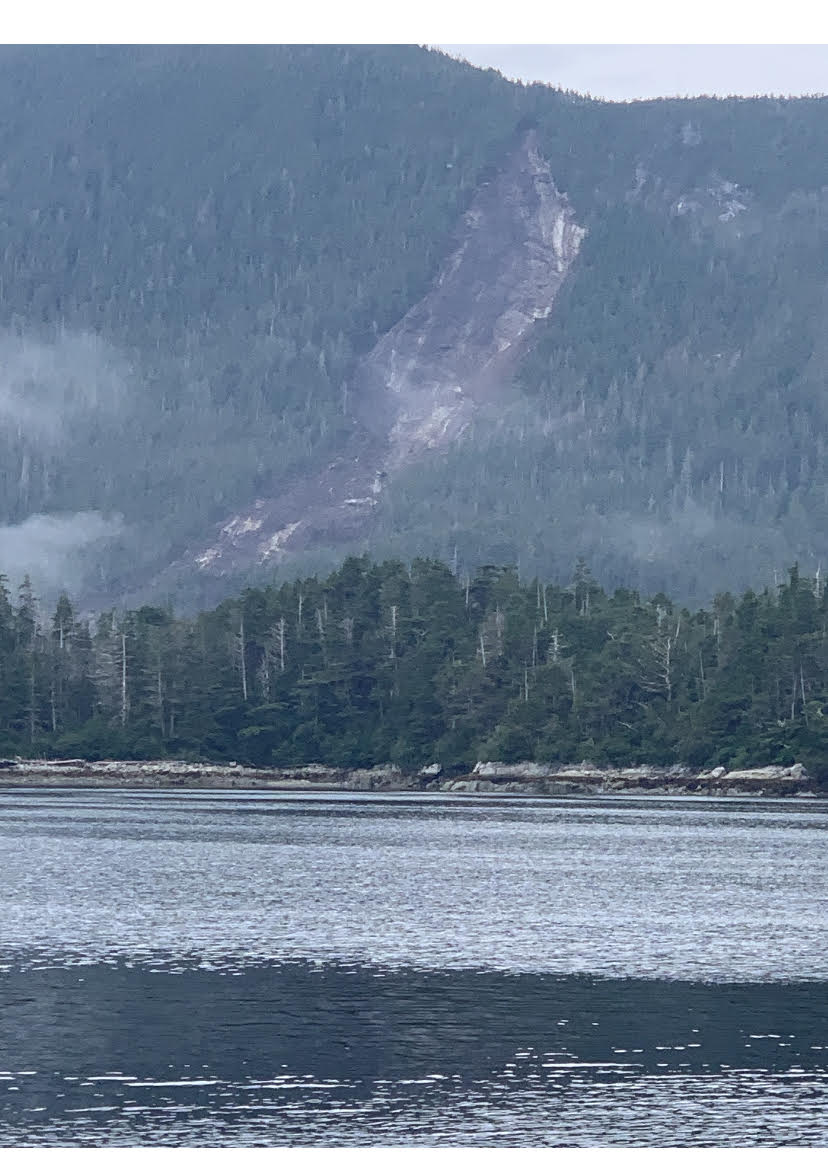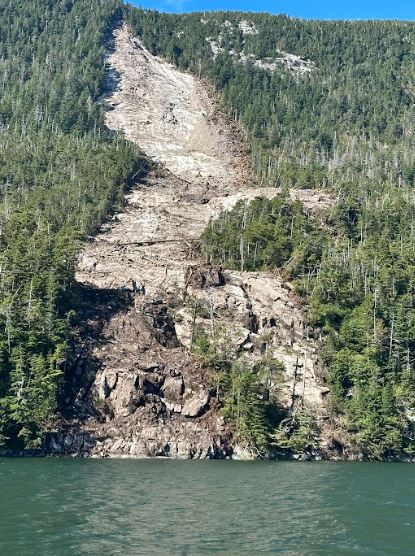
Record-breaking rainfall over the weekend caused at least one landslide near Sitka.
Much of Southeast got drenched on Saturday (8-12-23) as an atmospheric river moved through. But only Sitka broke a 62 year record.
“The old record was 4.22 inches setback in 1961. And the new record for 2023 is 4.42 inches of rain in a 24-hour period,” sayd Pete Boyd, a meteorologist with the National Weather Service in Juneau. “The other thing that is impressive is this is the eighth highest rainfall for one day for reported at the Sitka airport as long as records have been recorded there.”
By midday on Saturday, the rainfall rate had risen enough over a short period of time to trigger the relatively new landslide warning dashboard into medium alert. Unveiled to the public a year ago this month, the dashboard uses rainfall data to determine Sitka’s landslide risk as low, medium, or high. It was developed by the Sitka Sound Science Center in partnership with numerous other organizations, among them the National Science Foundation and the National Weather Service, after a landslide claimed three lives in Sitka in 2015.
With the big storm forecast and the pounding rain in the middle of the day, it was the first time many Sitkans checked the dashboard to discover an elevated landslide risk. Dr. Annette Patton is the lead geoscientist with the science center. She says Saturday actually wasn’t the first time the dashboard lit up yellow. It first happened on October 15, 2022.
“But the previous time was very briefly in the middle of the night without a whole lot of warning. So this was kind of the first opportunity to see the full functionality of the dashboard and how it could be used,” Patton says. “So definitely nerve-wracking. But also, we were really grateful to have a tool to be able to share with folks.”

And a very sizable landslide did happen over the weekend in Crawfish Inlet, about 30 nautical miles south of Sitka. And while the warning system is tailored to predict landslides closer to town, it’s still a valuable data point for Patton.
“One of the things that we know about warning and emergency communication is that if you tell people that an event is going to happen, and then it doesn’t, people start to lose trust,” Patton says. “In some senses, the fact that there was a landslide that didn’t hurt anybody is, you know, it’s not a good thing. But in that sense, it means that our tool is working the way that it’s supposed to, and hopefully that helps folks learn to trust the system.”
The landslide also brings home the importance of community engagement in the development and continued honing of the landslide warning system. Lisa Busch is the executive director of the Sitka Sound Science Center.
“We know about the landslide that happened in Crawfish [Inlet], because a fisherman, Mo Johnson, took a picture and sent it to his sister Karen, who posted it, and we all passed it around,” Busch says. “I just really want people to know that sending those pictures really makes a big difference. And it really does help the science.”
Landslide monitors will hopefully get a break later this week. Meteorologist Pete Boyd says while Sitka is expected to get more rain mid-week, the skies are looking clear this weekend.
View Sitka’s landslide warning dashboard here
To submit a photo or information about a landslide to researchers, email landslides@sitkascience.org






























